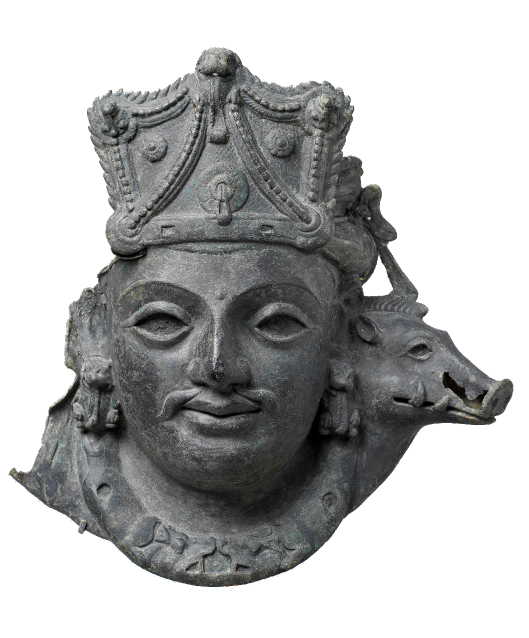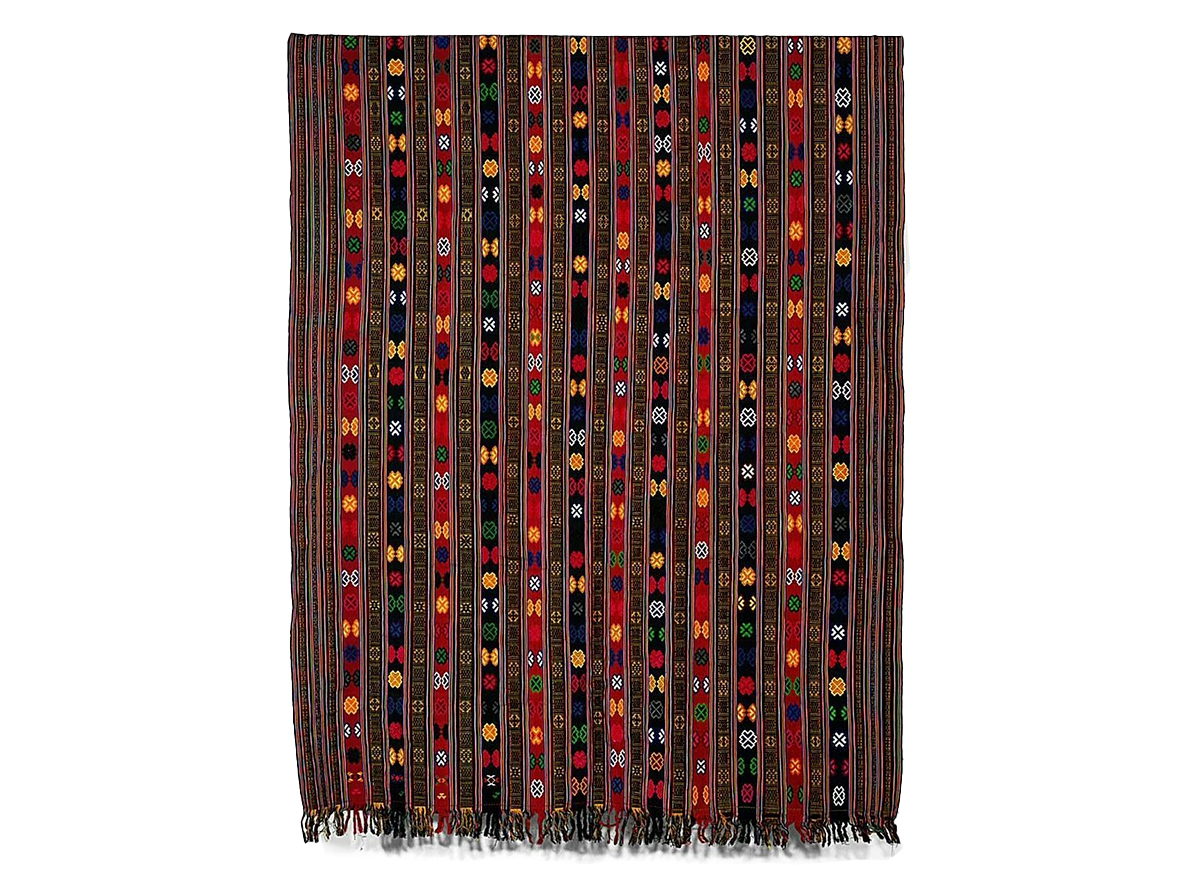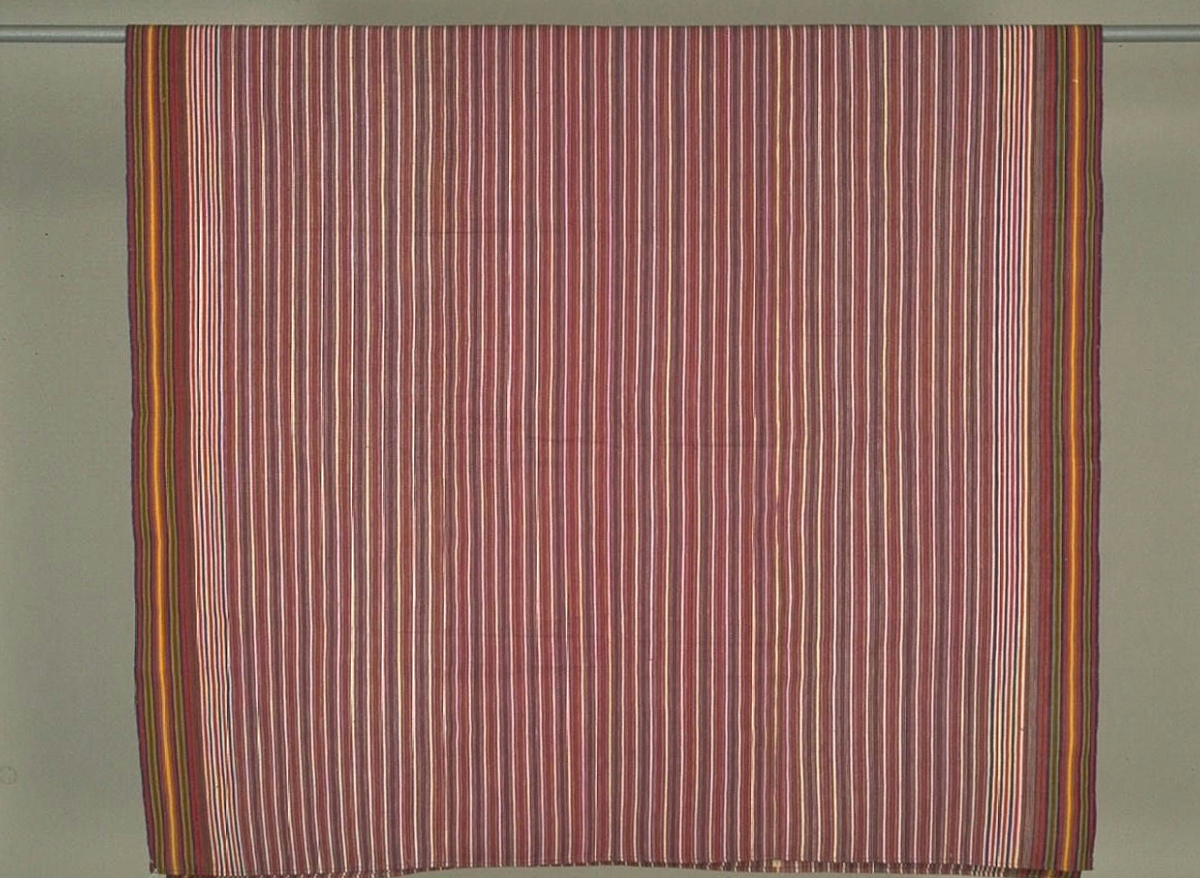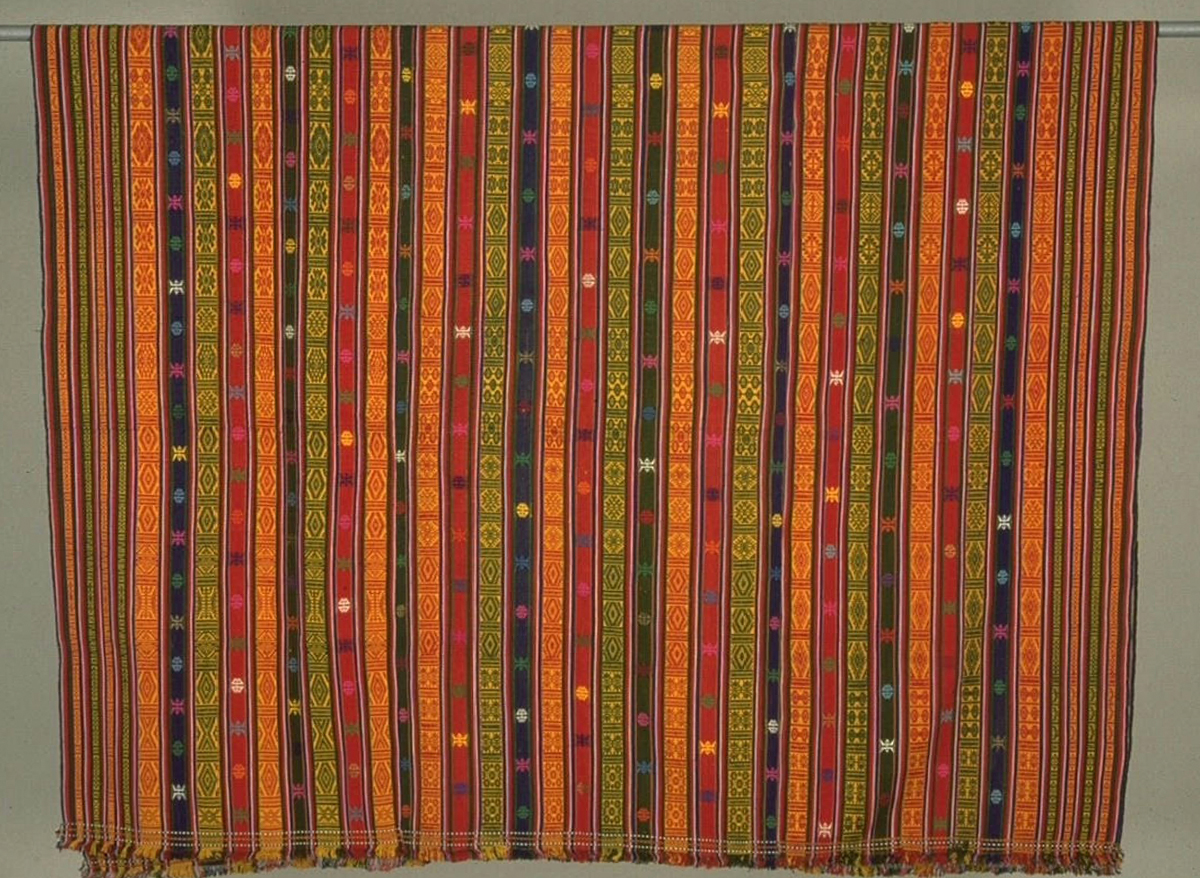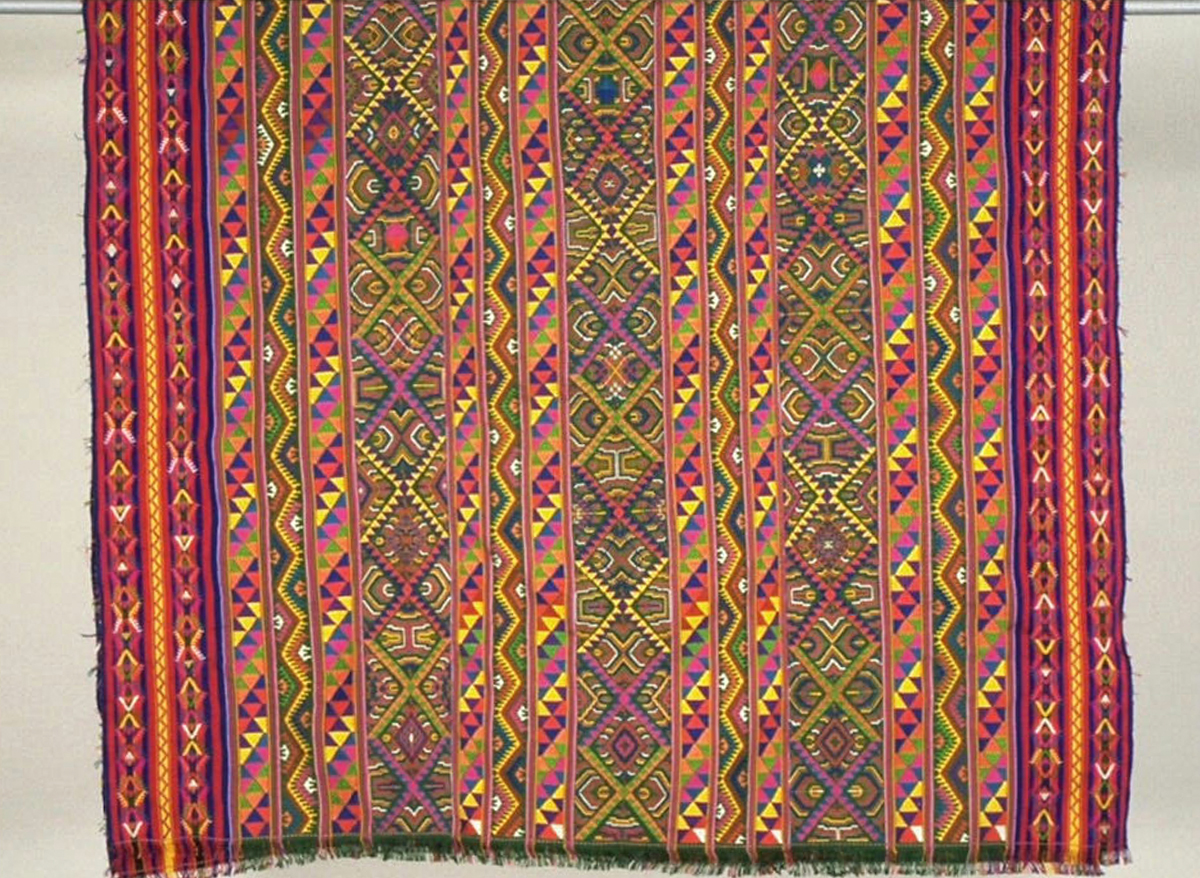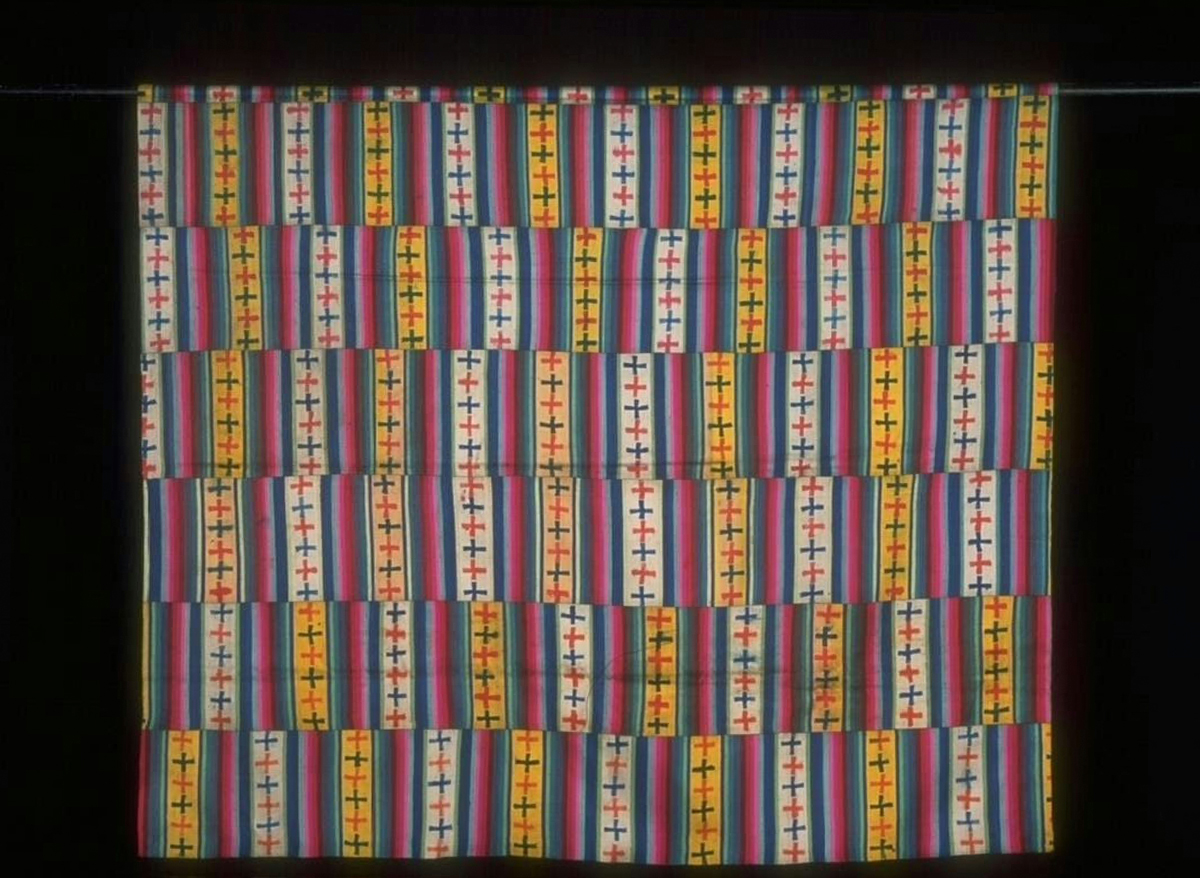ARTICLE
Kira
Besides the common warp-wise stripes, the fabric is also densely patterned with colourful geometric motifs such as the Tree of Life (shinglo), multi-coloured triangles (tenkhep metho), double thunderbolts (dorji jadram), swastikas (yurung), flowers, as well as shapes resembling sun rays, the wings of a fly (jam gi shogdro), and birds’ eyes (jagi mikto).
The kira is worn over a loose open-front blouse (wonju) with elongated sleeves and a wide collar and lapel, traditionally with a full-length petticoat (gutsum) or underskirt (meyo) underneath. It is wrapped lengthwise around the body so that the stripes are horizontal; this is in contrast with the men’s gho, where the stripes are vertical. When wrapped, the back section comprises two layers of fabric and covers the shoulders; in the front, a section of the length is doubled so that there are three layers of fabric, which pass just below the armpits. Front and back are fastened together with a brooch (koma) at each shoulder. Until the mid-twentieth century, long sturdy pins called thinkhab were used instead, which often served to hold together the multiple kiras that women would wear layered, and were connected to each other with a metal chain. The koma, thinkhab and khab thinkhab (a brooch paired with a small pin) tend to be intricately worked, often using gold, silver and stones like turquoise, and serve as functional ornaments.
The kira must be precisely draped, so that the stripes of the front and back layers line up exactly; the bottom hem is parallel to the ground; and the narrower edge of the kira is vertical rather than at an angle to the hem. The dress is then cinched tightly at the waist with the kera — a colourful, patterned cloth belt, which is wrapped twice around and fastened by tucking its fringed ends into itself. This creates a deep pouch in the front of the kira, which can serve as a pocket. A light, long-sleeved jacket known as the toego (not to be confused with the men’s undershirt of the same name) is worn over the kira. The long sleeves and the collar of the inner wonju are folded back over the toego’s cuffs and collar — in this way the colours of the two garments often create a striking contrast.
For formal occasions the ensemble is completed with a patterned shawl or shoulder cloth (kabne or rachu), which is draped over one shoulder and sometimes fastened with a brooch or tucked into the kera. In colder regions members of the elite would also wear the traditional embroidered leather boots lham or tshoglham, which are no longer common.
Historically the length of the kira was prescribed by social rank: floor-length for the royal family, ankle-length for nobility, and just above the ankle for others. While members of the royal family continue to wear the kira long, it is otherwise based largely on practical and aesthetic concerns — while younger women favour long kiras, older women prefer to wear their kiras shorter to avoid tripping over them. Preferences of colours, patterns and materials also vary by age, ranging from bright colours and delicate patterning among the youth, to bolder colours and patterns among middle-aged women, and deeper, more subdued fabric among older women — choices aligned with broader cultural and spiritual outlooks within Bhutanese society. Today, the kira is available in cotton and synthetic fabrics, for everyday wear, as well as mathra, a checked woollen fabric from Bumthang. Silk kushuthara kiras, luxurious and expensive, are less commonly worn.
Towards the end of the twentieth century, the half-kira was developed as a more comfortable alternative to the full kira. Tied at the hip rather than the shoulders, it covers only the legs but looks identical to the full kira when worn with the wonju and toego. While it has become widely popular among young women, who often pair it with t-shirts or sweatshirts, women employed in or visiting government institutions are still mandated to wear the full kira. Recently the half-kira has been adapted into a readymade form much like a skirt, with the kira’s distinctive fold sewn in, and offering a slimmer profile popular with younger women. Requiring less fabric, these newer versions of the garment are generally lighter and more affordable.
Bibliography
Altmann, Karin. Fabric of Life: Textile Arts in Bhutan – Culture, Tradition and Transformation. Berlin: De Gruyter, 2016.
Bean, Susan S., Diana K. Myers and Rinzin O. Dorji. “Modeling a Future for Handmade Textiles Bhutan in the Twenty-First Century.” Textile Museum Journal 46 (2019): 52–73.
Levinson, David, and Karen Christensen. Encyclopedia of Modern Asia: Volume 2 China-India Relations to Hyogo. Massachusetts: Berkshire Publishing Group, 2002.
Powerhouse Collection. “Womens Kira (Dress) from Bhutan.” Accessed December 26, 2023. https://collection.powerhouse.com.au/object/360564.
Schicklgruber, Christian, and Françoise Pommaret, eds. Bhutan: Mountain Fortress of the Gods. Chicago: Serindia Publications, 1997.
